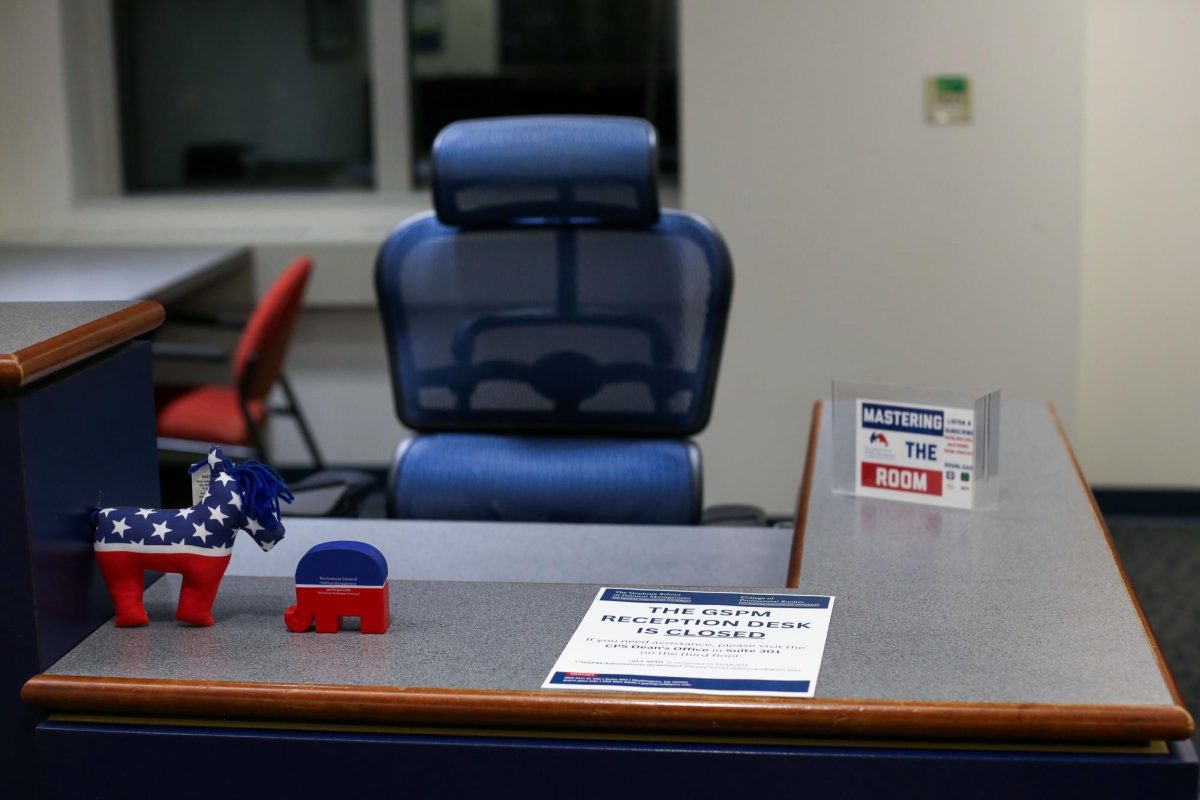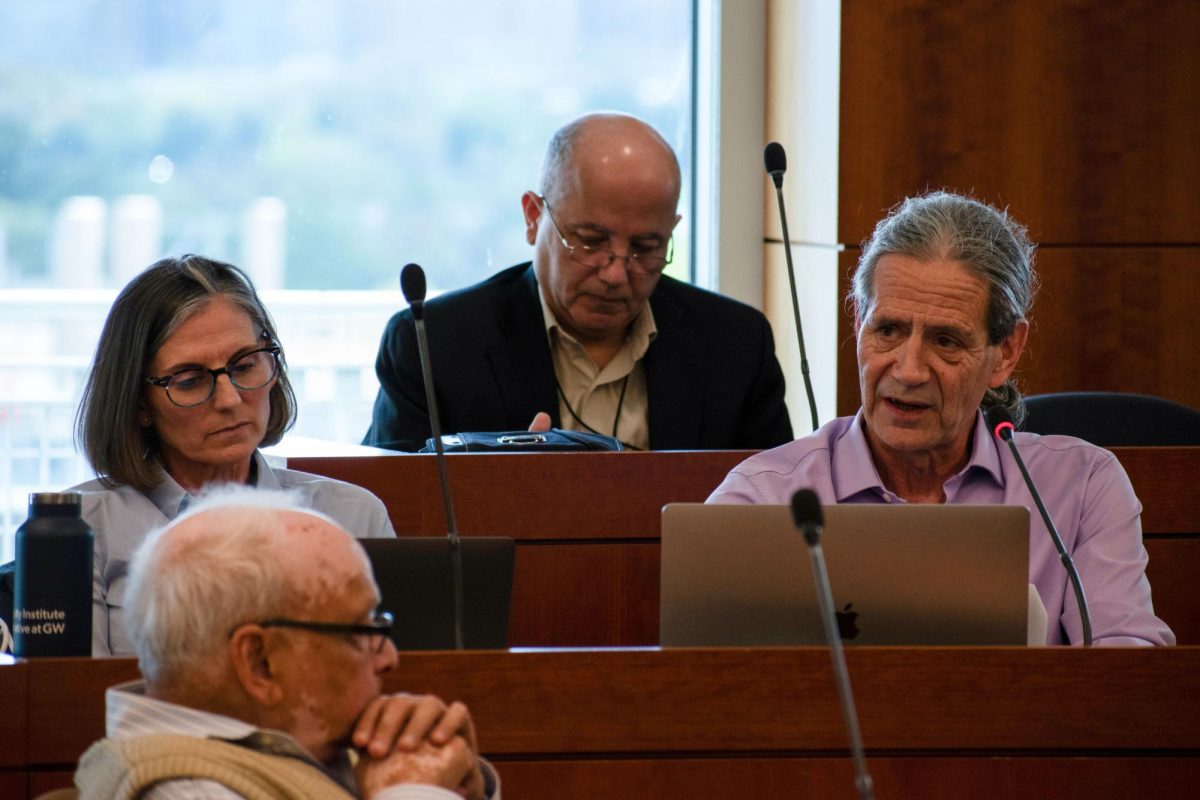The Corcoran School of Arts and Design will close its master’s program in decorative arts and design history at the end of 2022 after its fifth year at GW.
Administrators said they found limited demand for the master’s degree after evaluating the University’s current “areas of focus and distinction” during the COVID-19 pandemic. Officials said the master’s degree, which is offered through a collaboration with the Smithsonian Associates – the largest museum-based education program worldwide – has allowed students to develop an expertise in the history of artifacts and cultural collections worldwide while offered at GW.
University spokesperson Crystal Nosal said officials decided to close the program after the evaluation and announced the decision to students, faculty and officials in Corcoran this summer.
“GW came to the difficult decision to bring the program to a close after a careful review, reluctantly concluding that the long term sustainability of this program was not achievable,” she said in an email.
The master’s program in decorative arts and design history debuted at Corcoran in 2004 when the school was independent from the University before partnering with the Smithsonian Associates and transferring to George Mason University in 2012. The program returned to Corcoran at GW in 2017.
The Smithsonian partnership provided students the opportunity to take courses at the Smithsonian while allowing them privileged access to Smithsonian collections to study and research, according to Corcoran’s website.
Nosal said the program has enrolled about 15 to 20 students each semester for the past few years with about six new students per year since the program moved back to GW from GMU. She said five to six professors have taught the program each year along with four to five instructors per semester, including curators and museum professionals in the District.
She said Corcoran faculty met with current students this summer to discuss outstanding degree completion requirements to ensure that they will earn their degree as planned.
“We understand the distress that this may cause in the community of alumni, students, supporters and faculty who are passionate advocates for the degree,” Nosal said. “While this is not a welcome outcome, it is a necessary one that does not reflect on their individual and collective personal and professional achievements.”
Kym Rice, the deputy director of Corcoran, said students who intern and study at various Smithsonian museums and professors who are staff and faculty at the institution will continue the school’s relationship with the Smithsonian despite the program’s closure.
“We are very appreciative of the dedication of the program’s faculty who have so ably taught the program’s curriculum and mentored its graduate students since the program’s founding,” Rice said.
Rice also shared a statement she received from Frederica Adelman, the director of the Smithsonian Associates, about the program’s closure.
“Our long partnership with the Corcoran continues, and we will share access to Smithsonian resources and a wide range of educational experiences with its students,” Adelman said.
Faculty in the program said they were sad to see a decades-long program come to an end, but they are “proud” of all the past and present students and their achievements with the help of the program.
Erin Kuykendall, a visiting assistant professor and the director of graduate studies in decorative arts and design history, said the program taught and prepared students for careers as curators, specialists and historians in decorative arts and design history. She said the program required students to intern at museums like the National Museum for Women’s Arts, the National Museum of Air and Space and the National Museum of American History for practical experience.
She said recent graduates of the program “immediately” secured positions at major museums, like the Museum of the Bible, or advanced to doctoral programs, like American studies at the College of William and Mary.
“It was so gratifying to see each cohort mature and learn so much during their short time at GW,” Kuykendal said in an email. “I know my predecessors and fellow faculty members remain incredibly proud of all our alumni, including those who earned their MA during the Program’s partnership with George Mason University and the Corcoran College of Art and Design.”
Oscar Fitzgerald, an adjunct professorial lecturer of decorative arts and design history, said he is “upset” about the program’s discontinuation because he has taught courses in the program since its first iteration at the Parsons School in the 1990s. He said the program used to attract as many as 80 to 90 students per year at other institutions before arriving at GW.
He said enrollment in the program dropped in the past several years partly because the University didn’t “emphasize” the connection with the Smithsonian enough.
“It was very clear that the reason that it closed is that the enrollment dwindled, and it’s just not viable for 10 or 20 students,” he said. “When it had 90 students, it was very vibrant.”
Jeff Hardwick, an adjunct professorial lecturer of decorative arts and design history, said the program struggled to attract students after arriving at GW compared to its time at GMU, where he also instructed. He said he couldn’t teach the courses he offered in the past couple of years through the program, like Museums in the Digital Age, because not enough students enrolled in them.
“This was a very successful program for a while, and I think enrollment and other factors sort of ended up sinking it,” Hardwick said.
Hardwick, who began teaching with the program in the early 2000s and previously worked for the Smithsonian, said he’s disappointed to see the degree come to a close because he enjoys teaching the subject apart from his full-time job as the deputy director of the National Endowment for the Humanities – a federal agency supporting humanities research and education.
“It’s a real loss I think, because it is a pretty unique program,” he said. “There’s only a couple other programs in the U.S. like it. It was a real niche.”








